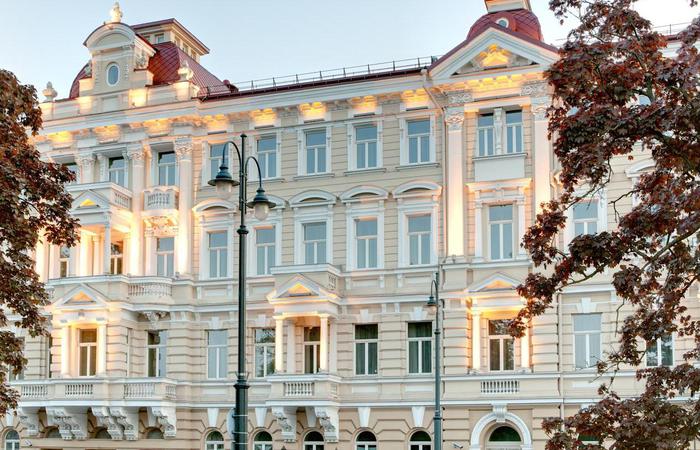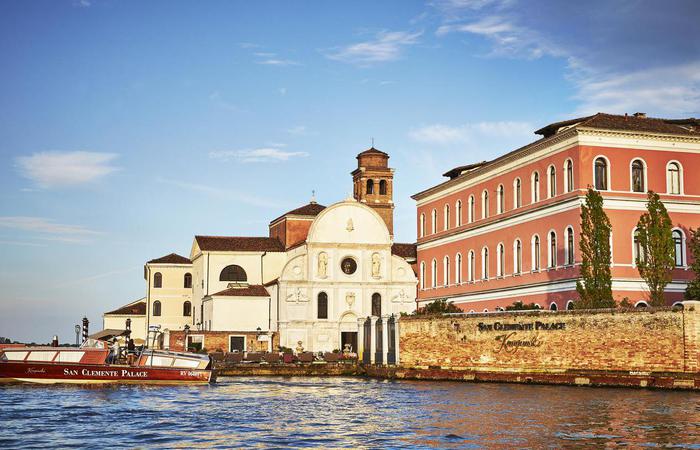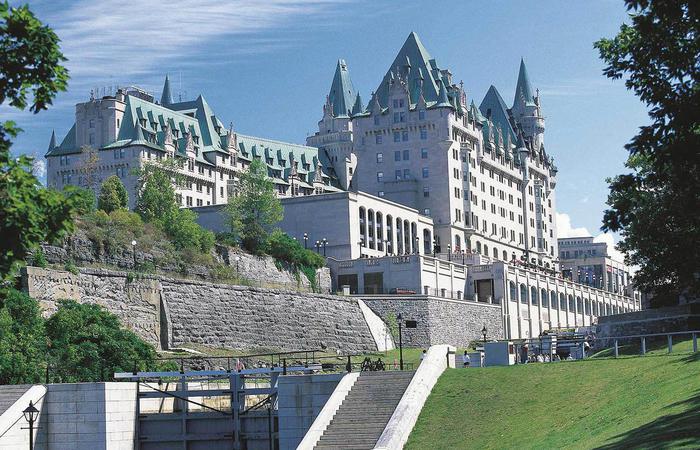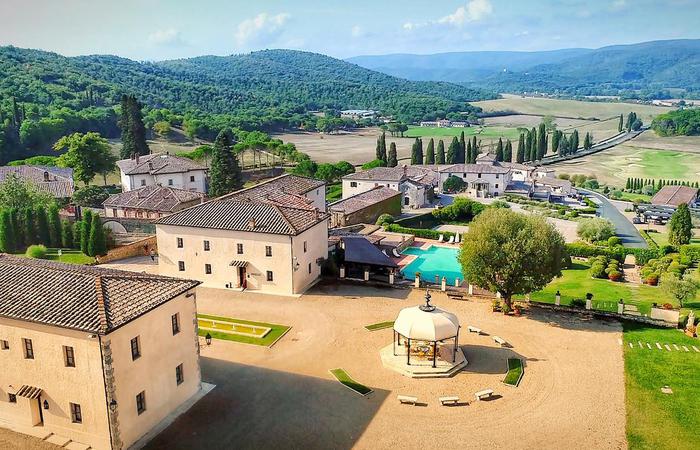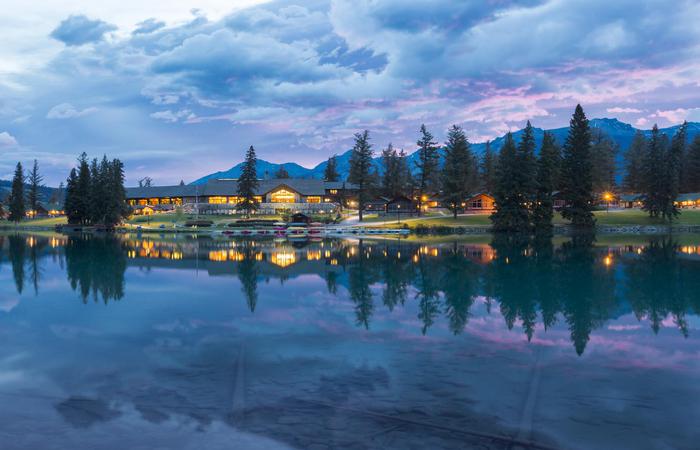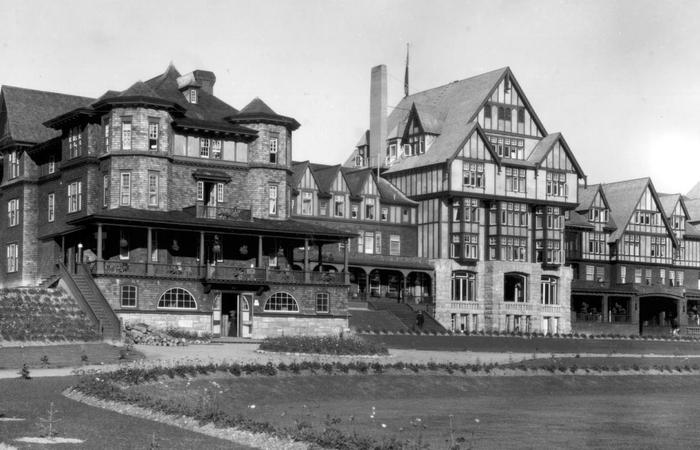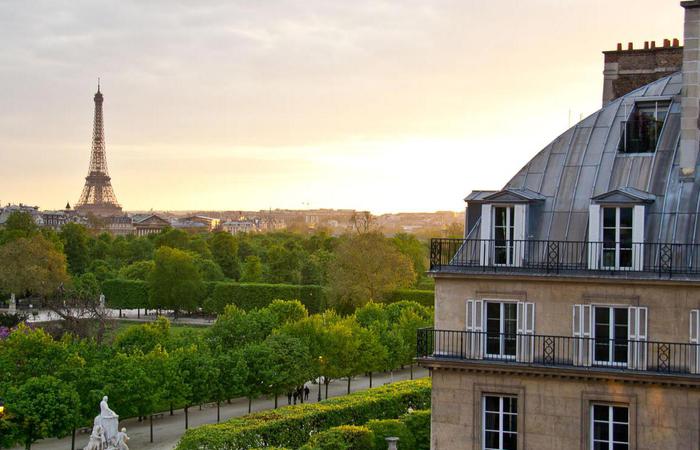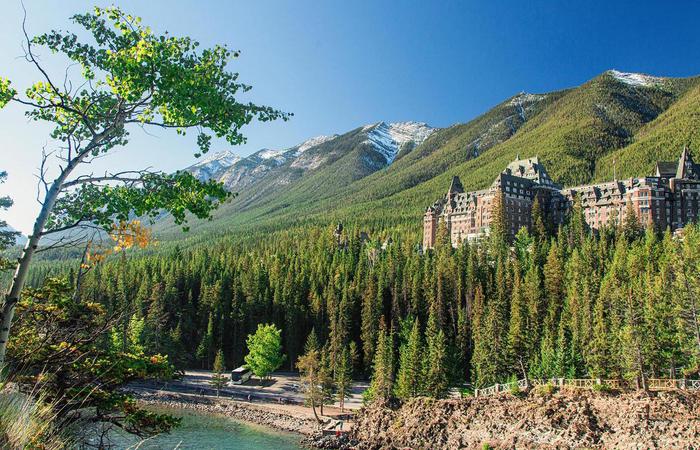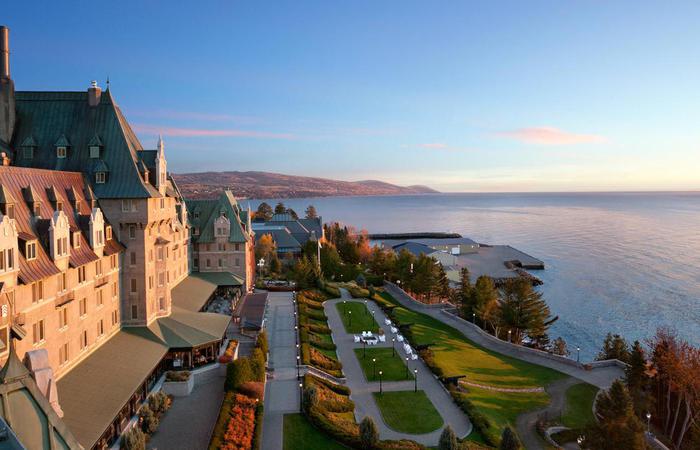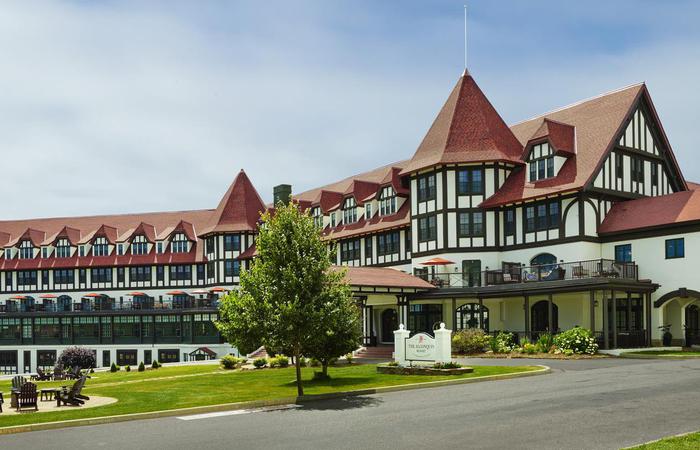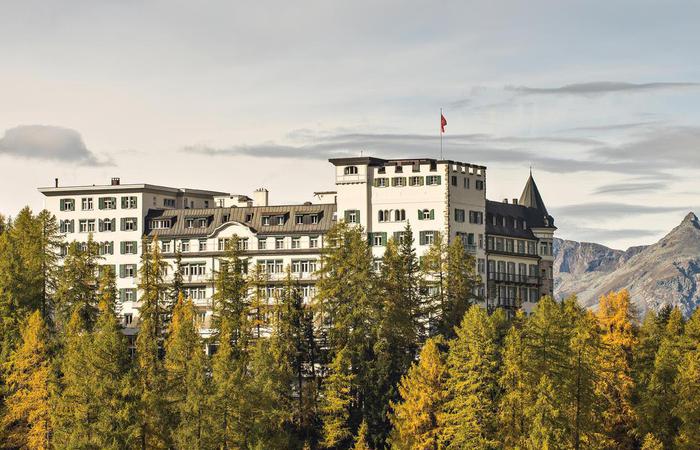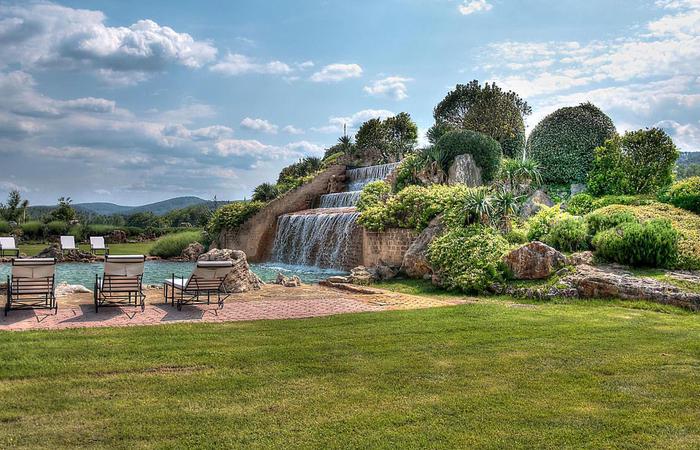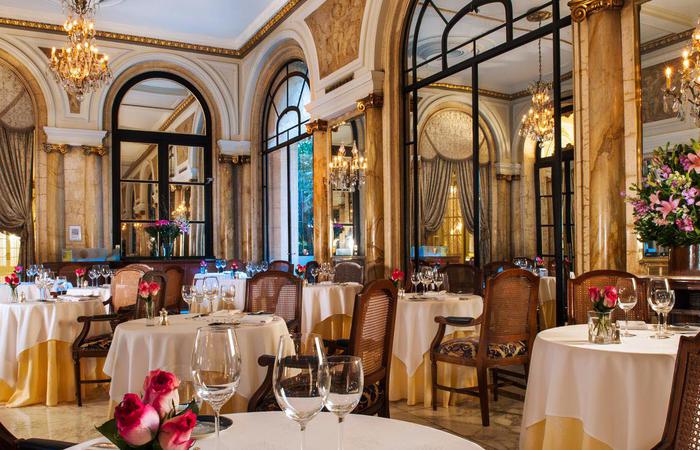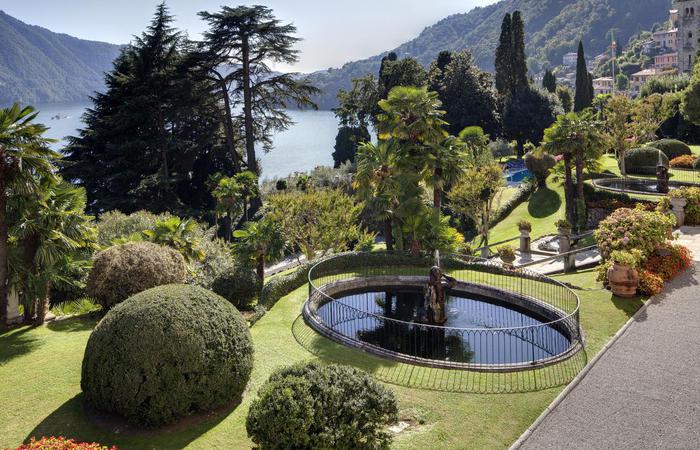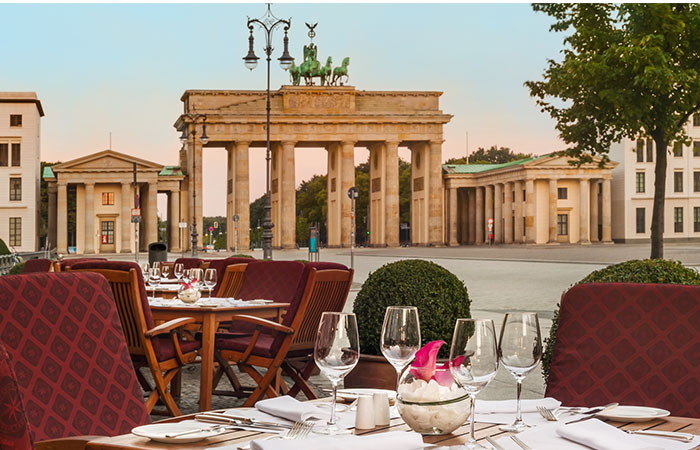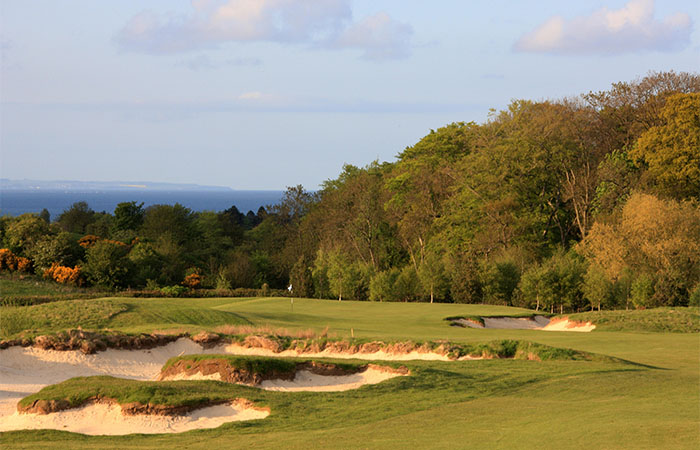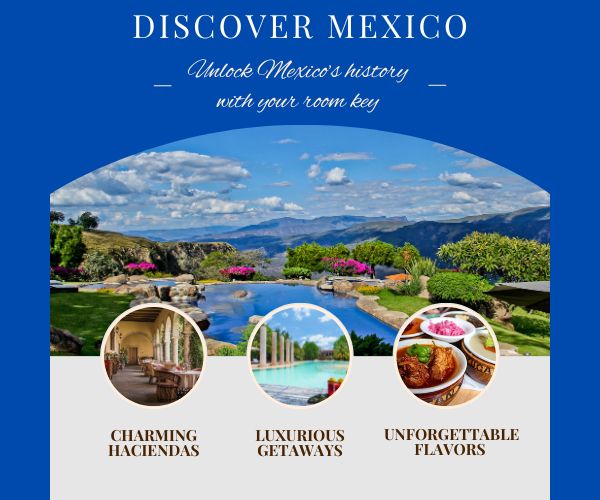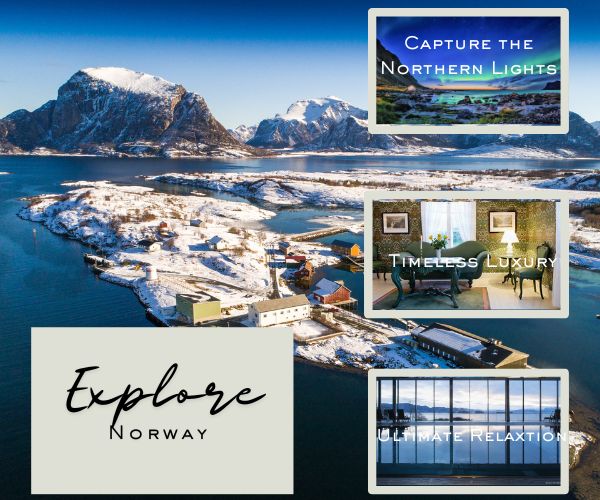Receive for Free - Discover & Explore eNewsletter monthly with advance notice of special offers, packages, and insider savings from 10% - 30% off Best Available Rates at selected hotels.
history
Discover Mercure Lyon Centre Château Perrache, which has hosted generations of train travelers to the ancient city of Lyon for more than a century.
Mercure Lyon Centre Château Perrache, a member of Historic Hotels Worldwide since 2025, dates to 1905.
VIEW TIMELINEA prominent landmark within Lyon’s celebrated Presqu’île district, the Mercure Lyon Centre Château Perrache Hotel stands as an enduring testament to architectural grandeur and unrivaled hospitality. The origins of this fantastic holiday destination date back to the early 20th century, when the French railroad corporation Compagnie des chemins de fer de Paris à Lyon et à la Méditerranée (PLM) sought to build a luxury hotel adjacent to the Gare de Lyon-Perrache. Indeed, the Gare de Lyon-Perrache had rapidly emerged as a popular regional train station, coming to host hundreds of passengers daily. To better accommodate their time spent in Lyon, the PLM decided to open a gorgeous boutique hotel that offered only the finest amenities and service. The PLM acquired the site of a former local brewery known as the “Brasserie Rinck,” which featured stunning views of the Saône nearby. Construction began on the structure three years later, with renowned Parisian architect Georges Chedanne overseeing its design. Working alongside Lyonnais architect M. Curieux, Chedanne proceeded to develop a magnificent multistory compound that displayed an ornate wealth of Art Nouveau style motifs. Intricately crafted ironwork constituted much of the exterior façade, as did an extensive variety of marvelous curvilinear forms and floral motifs. This phenomenal level of craftsmanship appeared inside as well as flowing geometric lines guided potential guests from one room to another. Accomplished artists like Henri Martin, Ernest Laurent, and Edgar-Henri Boutry installed a breathtaking collection of artwork throughout the structure, while famed cabinetmaker Louis Majorelle carved the sophisticated canopies that sat atop the hotel’s entrances. Even innovative building techniques were incorporated into the overall layout, including the use of cork insulation as an experimental sound buffer.
Named the “Hôtel Terminus,” the PLM’s spectacular new structure debuted to incredible regional acclaim in 1906. Much to the delight of the organization’s officers, the hotel was soon practically full every night with throngs of enthusiastic tourists eager to explore Lyon. However, the outbreak of World War II abruptly ended the prosperity it had experienced up to that point. The war introduced all kinds of hardship for the business, including a period of direct German occupation that lasted through most of the conflict. Unfortunately for the hotel, it struggled to recover once the fighting had long since stopped. The greatest event to affect the historic hotel’s ongoing recovery efforts was the opening of the Gare de Lyon-Part-Dieu during the 1980s, which went on to significantly divert rail traffic away from the neighborhood. But the building’s fortunes began to turn for the better when new owners instituted a comprehensive renovation the following decade. The hoteliers endeavored to revitalize the site’s architectural integrity, striving to ensure that its history would survive for generations to come. In fact, the quality of the preservation work proved to be so masterful that the French Ministry of Culture designated the entire location as a national historic monument in 1997! (This title was eventually supplemented with the “Patrimoine du XXe siècle” label, further cementing its status as a protected landmark.) Now known as the “Mercure Lyon Centre Château Perrache” today, this fantastic historic hotel has resumed being one of the most exclusive places to stay in Lyon. Although contemporary visitors are certain to enjoy the hotel’s luxurious guestrooms and amazing cuisine, its most impressive trait is the state of the historic architecture. Guests will notice how every facet of the building—from its majestic façade to its ornate interiors—truly encapsulates the cultural essence of Belle Époque-era France.
-
About the Location +
Lyon is among the most historic communities in France, as its history harkens all the way back to the time of the Romans. In the first century B.C., the Romans constructed the settlement as an outpost at the confluence of the Saône and Rhône rivers. They had specifically intended for the new town to provide a refuge for settlers who had been displaced by a series of destructive wars fought against Central Europe’s Gallic tribes. Selecting a spot atop a hill within Lyon’s modern neighborhood of Fourvière, Roman engineers began establishing a rudimentary grid of interlocking streets and districts. At first, the Roman inhabitants referred to the area as “Colonia Copia Felix Munatia,” before gradually settling on the simpler name of “Lugdunum.” (The town’s original name was a means of invoking the blessings of the gods.) But in a matter of years, the Romans realized the settlement’s strategic importance, especially in relation to its continued conquests across the continent. Its proximity to both the Saône and Rhône made it a central hub for communication across the Roman frontier, which attracted all kinds of merchants who were interested in forging trade routes from the Italian Peninsula. A variety of major transcontinental thoroughfares appeared in Lugdunum, further reinforcing its economic and political importance. Soon enough, the town had grown to the size of a sprawling city. Two Roman emperors would even be born in Lugdunum—Claudius and Caracalla. The community also became the capital for the provincial province of Gallia Lugdunensis and its successor state, the Kingdom of the Burgundians, which the Romans created in the 5th century AD.
Lugdunum eventually became subject to the authority of the Holy Roman Empire in 843, although it remained part of the lesser Kingdom of the Burgundians until the early 10th century. Over time, the realm fractured into smaller fiefdoms, with the city joining the Duchy of Burgundy at the height of the Middle Ages. Nevertheless, the local archbishops wielded the most significant political power at the time, using their influence to hold massive church gatherings within the city limits. Several of the city’s most renowned historic landmarks started to debut, as well, including the Basilica of Saint-Martin d'Ainay, the Église Saint-Paul, and most notably, the Cathédrale Saint-Jean-Baptiste de Lyon, or “Lyon Cathedral.” But at the start of the 1300s, the French king, Philip IV, annexed the entire area, which by that point had become known as just “Lyon.” Under French rule, Lyon experienced a period of prolonged prosperity that culminated with the European Renaissance of the 15th and 16th centuries. Italian traders began holding commercial fairs in the heart of the city, giving rise to a strong financial sector that made Lyon the “counting house” for all of France. Yet, silk trading also emerged as a dominant economic force within Lyon, as did the publication of all kinds of literature. In fact, many famous French writers of the age, including Maurice Scève, Antoine Heroet, and Louise Labé, established residencies within the city. This newfound wealth led to new construction, as well, with the most notable taking place in Lyon’s renowned “Vieux Lyon” neighborhood.
Lyon found itself thoroughly in the heart of the French Revolution, when various Revolutionary armies besieged it in the autumn of 1793. Making matters worse for the inhabitants was the collapse of the domestic silk trade. Fortunately, prosperity returned to Lyon in force in the following century, as the Industrial Revolution took hold over the entire community. Silk itself once again emerged as a powerful trade within Lyon, specifically its refinement into fabric. The influx of new wealth in Lyon spurred yet another wave of building projects that transformed the local skyline to resemble its modern appearance. For instance, many brilliant landmarks opened in the center of Lyon, such as the Palais de la Bourse, the Place des Jacobins, and the Basilica of Notre-Dame de Fourvière. Lyon also saw the creation of its famous network of funicular railways, which remains in operation today. The city is now one of the most culturally vibrant places in France. While its current economy is still largely influenced by silk, it is home to factories that specialize in the manufacture of commercial dyes, electrical machinery, synthetic fibers, and many other products. It is the site of many fascinating cultural institutions—such as the Musée des Beaux-Arts de Lyon and the Musée des Tissus et des Arts Décoratifs—making it a contemporary bastion for education and the arts. And most of downtown Lyon has even been listed as a rare UNESCO World Heritage Site!
-
About the Architecture +
Mercure Lyon Centre Château Perrache displays brilliant examples of Art Nouveau-style architecture. Art Nouveau architecture was among the most popular styles in Europe from the 1890s till the outbreak of World War I. It quickly appeared across the continent, referred to by such names like “Glasgow Style,” “Modern Style,” and “Sezessionsstil.” Some of Europe’s most prominent architectural minds employed Art Nouveau architecture, too. Perhaps the greatest example was Hector Guimard, who used the style to create his wonderful Castel Béranger. The termwas derived from an article published in the L’Art Moderne to introduce the work of architectural collective Les Vingt toward the end of the 19th century. Architects who embraced the Art Nouveau were part of a growing demographic of intellectuals that yearned to create novel artistic forms that broke with the imitative historicism of the past. More importantly, they wanted their new architectural motifs to reflect imaginative creativity, especially as European society became increasingly more structured and industrialized. Over time, those professionals created a design aesthetic characterized by its curvaceous lines and use of organic shapes. Objects from nature were featured prominently throughout the façade of every structure, including the likes of insects and exotic plants. Surfaces often contained terra cotta coverings and ornate tile moldings spread throughout the interior. Sloped arches also defined the windows and doors, while fantastic mosaics existed on nearly every ceiling. Asymmetrical layouts structured many Art Nouveau buildings as well, providing for a unique appearance in many of Europe’s sprawling cities. But Art Nouveau architecture was eventually phased out in favor of a new style known as “Art Deco,” as its emphasis on modernity seemed to better represent the state of Western culture following World War I.

